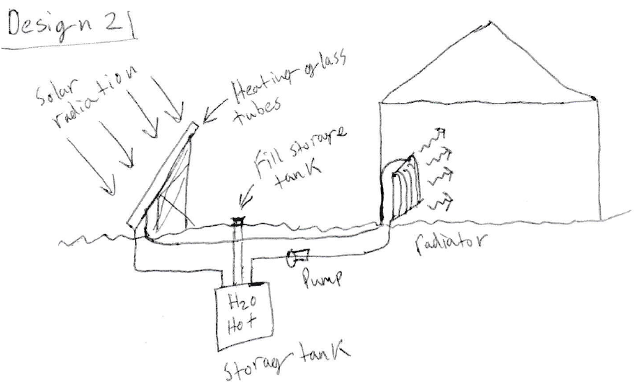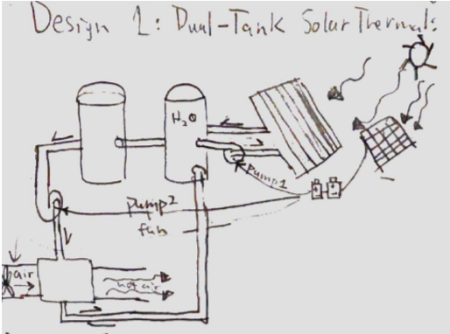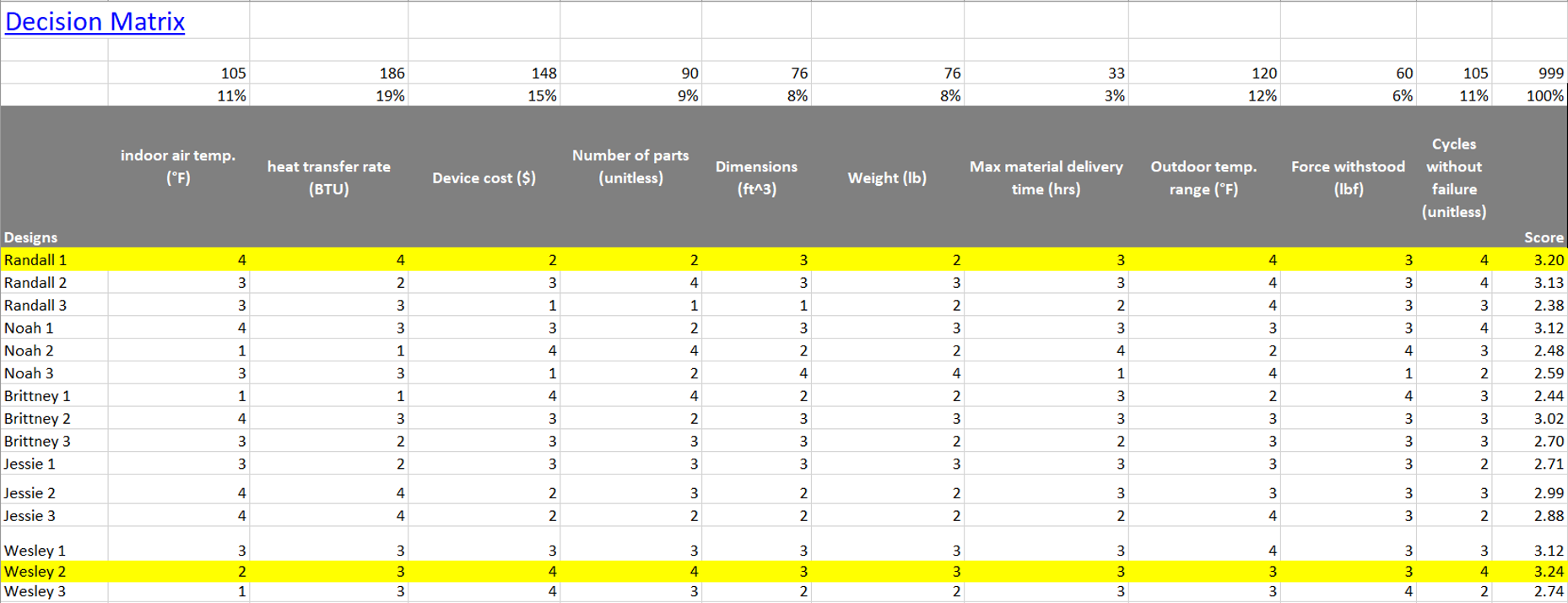Design Alternatives and Decision Matrix
This page contains a sample of alternative designs, as well as the decisions matrix used to evaluate them

Concept 1
The highest scoring concept is compact with less major components than most of the other concepts. It has a heat exchanging system within the tank itself, where a buried storage tank contains a heated fluid that is then transferred through a heat exchanger to heat cooled down air from the house. It uses a resistive network to heat the tank, a dual function pump that pumps the heat transfer fluid to and from the tank, and a radiator to release the heated air into the house. It also uses a wind turbine to produce electricity for the Arduino for temperature monitoring, the radiator, and pump as well as a lithium battery to store electricity to operate these devices at night.

Concept 2
The second highest scoring concept involved using a solar panel to produce electricity to operate a pump and Arduino for temperature monitoring. A buried storage tank is heated by heating glass tubes and then a heat transfer fluid is heated in this storage tank and then pumpd into a heat exchanger next to the house which heats cool air from the energy in the hot heat transfer fluid. The hot air is then ventilated into the house with a radiator.

Concept 3
The third highest concept uses a solar panel to heat up a storage tank with warm liquid during the day with another storage tank and cool liquid at night which is recycled and held in this tank so as to not cool down the hot liquid tank. At night the hot liquid is pumped to a heat exchanger by the house which heats the cool air and then blows this hot air into the house with a fan. The cold liquid is pumped and recycled into the cold tank as explained previously. A solar panel powers the pumps and the fan. It also stores electricity in a lithium battery which powers the system at night.
Decision Matrix:
For concept selection, the team examined a wide range of engineering requirements by which to evaluate each design. The most important of these include heat transfer rate into the building, device cost, indoor air temperature of the house, and the functional outdoor temperature range, which is a reflection of how much heat the device will retain on a cold night. The team also considered the number of parts, as well as dimensions, weight, force withstood, and the number of cycles before failure in order to reflect complexity and resilience of the device. Finally, max material delivery time was included to reflect the local availability of materials selected for the device. The highlighted designs were the two highest scoring concepts.
